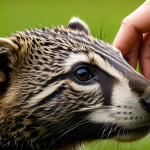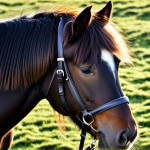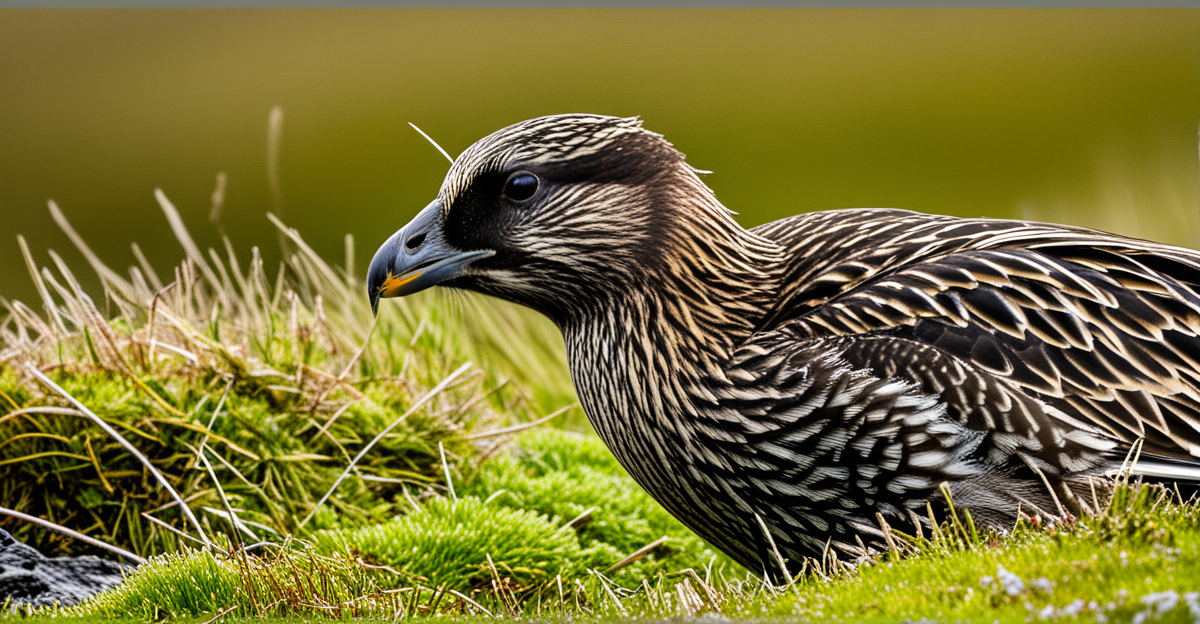Essential Guidelines for Safe Wildlife Interaction in the Hebrides
Respecting nature while ensuring personal safety
When engaging with Hebrides wildlife safety, the guiding principle is to minimize disturbance to animals and their habitats. Approaching wildlife quietly and maintaining a respectful distance reduces stress on native species and helps preserve the local environment. Responsible wildlife interaction also means resisting the urge to feed animals or interfere with their natural behaviors, as these actions can disrupt ecosystems.
En parallèle : Exploring the influence of uk agricultural subsidies on farmland bird populations: a detailed analysis
Personal safety measures are crucial given the Hebrides’ diverse habitats—from rugged coastlines to moorlands. Visitors should wear sturdy footwear and appropriate clothing to navigate uneven terrain safely. Awareness of tidal changes and weather is important to avoid dangerous situations. Carrying a basic first-aid kit is advised for minor injuries during wildlife exploration.
The do’s and don’ts of wildlife engagement include observing without touching, staying on marked paths, and disposing of litter properly to prevent environmental impact. Do use binoculars or zoom lenses for close observation without intrusion. Don’t chase or corner animals; letting them move freely maintains their natural routines and safeguards your safety. Following these essential guidelines ensures a safe, respectful experience that supports Hebrides wildlife conservation efforts.
A lire aussi : Exploring how uk wildlife sanctuaries boost animal recovery and release initiatives
Essential Guidelines for Safe Wildlife Interaction in the Hebrides
When engaging with Hebrides wildlife, adhering to responsible wildlife interaction principles is crucial to protect both animals and visitors. The foremost rule is to minimize disturbance to wildlife by keeping a respectful distance and avoiding loud noises or sudden movements. This approach helps maintain natural behaviors and prevents stress on native species.
Personal safety in diverse habitats—ranging from rocky shorelines to dense moorlands—requires proper preparation. Wear sturdy footwear and weather-appropriate clothing to navigate uneven terrain securely. Be aware that some animals, though generally timid, can become defensive if approached too closely or cornered.
The do’s and don’ts of wildlife engagement underline the importance of observing without interfering. Do use binoculars or zoom lenses rather than approaching animals directly. Don’t feed or touch wildlife, as this can disrupt natural diets and introduce health risks. Finally, always follow local guidelines and signage to reduce environmental impact and sustain the fragile ecosystems of the Hebrides.
Key Wildlife Species in the Hebrides
Recognizing the rich biodiversity around you
The Hebrides islands are home to a diverse array of Hebrides animals, including both marine and terrestrial native species. Commonly encountered animals range from seabirds like puffins and guillemots to mammals such as red deer and otters. Coastal waters are habitats for seals and occasionally dolphins, making marine wildlife observations a highlight of any visit.
Rare and protected species, such as the white-tailed sea eagle, demand particular attention due to their vulnerable status. Awareness of these native species helps visitors appreciate the ecological value of the region and supports efforts to avoid disturbance.
For effective species identification, focus on distinct features such as the white tail of the sea eagle, the reddish coat of red deer, or the splashing dives of puffins. Using field guides and binoculars enhances recognition without intrusion. Noticing habitat clues—like nests on cliffs or tracks near freshwater streams—also aids spotting these remarkable animals.
By familiarizing yourself with the local fauna, you enrich your wildlife experience while practicing responsible engagement with Hebrides wildlife.
Essential Guidelines for Safe Wildlife Interaction in the Hebrides
Safeguarding animals and ensuring your well-being
Minimizing disturbance to Hebrides wildlife is vital. Keep a safe, respectful distance to avoid stressing animals or disrupting their routines. Quick movements or loud noises can startle wildlife, so approach quietly and calmly. This principle supports both their natural behavior and overall Hebrides wildlife safety.
Personal safety in the varied terrains of the Hebrides requires preparation. Wear sturdy footwear designed for rocky shores or moorlands, and dress in weather-appropriate layers to handle sudden changes. Be cautious near cliffs and tidal zones to avoid accidents. Carry a basic first-aid kit and inform someone of your plans when exploring remote areas.
When engaging with wildlife, follow clear do’s and don’ts:
- Do use binoculars or cameras with zoom lenses to observe without intrusion.
- Don’t feed or touch animals, as this affects their natural diet and can transmit diseases.
- Do stay on marked paths to protect habitats and reduce environmental impact.
- Don’t chase or corner animals—let them move freely to maintain their safety and yours.
These guidelines ensure a responsible wildlife interaction that respects nature while protecting visitors.
Essential Guidelines for Safe Wildlife Interaction in the Hebrides
Safeguarding nature while ensuring your well-being
To uphold Hebrides wildlife safety, the primary principle is to minimize disturbance to native species by maintaining a respectful distance. This approach respects natural animal behaviors and reduces stress, which is essential for healthy ecosystems. Quick movements, loud sounds, or attempting to touch wildlife can provoke defensive reactions and cause environmental impact.
Personal safety is equally critical across the Hebrides’ diverse and often challenging habitats. Wear sturdy footwear to handle rocky or uneven terrain safely, and choose clothing suitable for sudden weather changes common in the region. Carrying basic first-aid supplies prepares you for minor injuries encountered during wildlife exploration.
The do’s and don’ts of responsible wildlife interaction include observing without physical contact and always staying on designated paths to protect sensitive habitats. Use binoculars or zoom lenses to get close without intrusion, and never feed animals, as this can lead to unhealthy dependency and alter natural behaviors. Following these safety standards supports both your protection and the thriving of Hebrides wildlife.
Essential Guidelines for Safe Wildlife Interaction in the Hebrides
Safeguarding animals and ensuring your well-being
When practicing Hebrides wildlife safety, the fundamental principle is to minimize disturbance to native species. This means maintaining a respectful distance, moving slowly, and avoiding sudden noises or movements that can startle animals. Such careful behavior reduces the risk of stressing wildlife and helps preserve delicate natural behaviors.
Personal safety is equally important across the diverse Hebrides habitats, including rocky coasts, moorlands, and tidal zones. Wearing sturdy, non-slip footwear and weather-appropriate layered clothing supports safe navigation on rough terrain. Always be mindful of tidal schedules and weather forecasts to prevent hazardous situations.
Key do’s and don’ts for responsible wildlife interaction include:
- Do use binoculars or zoom camera lenses for observation without intrusion.
- Don’t feed or touch animals; this can harm their health and disrupt ecosystems.
- Do stick to marked trails to lessen your environmental impact.
- Don’t chase or block animals’ movements, as this causes stress and potential danger.
By following these guidelines, you promote responsible wildlife interaction, protecting Hebrides wildlife and ensuring your own safety during every encounter.
Essential Guidelines for Safe Wildlife Interaction in the Hebrides
Respect habitat, ensure safety
Minimizing disturbance to Hebrides wildlife is fundamental for both environmental and personal security. Maintain a safe distance at all times to avoid causing stress or altering animal behavior. Sudden movements or loud noises can frighten wildlife, so approach habitats quietly and patiently. This responsible wildlife interaction helps preserve natural rhythms and habitats, effectively reducing environmental impact.
Personal safety is equally crucial amid the Hebrides’ varied terrain—from rocky shores to moorlands. Wear sturdy footwear and weather-appropriate clothing to negotiate uneven paths safely. Being mindful of tidal shifts and sudden weather changes further supports Hebrides wildlife safety and your wellbeing.
When engaging with animals, adhere strictly to these do’s and don’ts:
- Do use binoculars or zoom lenses to observe without intrusion;
- Don’t feed or touch animals, which can disrupt diets and spread disease;
- Do stay on designated trails to protect fragile habitats;
- Don’t chase or corner wildlife, allowing them freedom and lowering risk to you.
Following these guidelines ensures a safe, respectful experience that supports both visitor safety and wildlife conservation in the Hebrides.
Essential Guidelines for Safe Wildlife Interaction in the Hebrides
Safeguarding wildlife and yourself
The core principle of Hebrides wildlife safety is to minimize disturbance by keeping a respectful and safe distance from animals. Sudden movements or loud noises can cause stress and disrupt native species’ natural behaviors. Approaching quietly and observing calmly prevents interference with their routines and supports overall environmental balance.
In diverse habitats—from rocky shores to moorlands—personal safety is vital. Wearing sturdy footwear and layered clothing suited to unpredictable weather ensures secure navigation of often uneven terrain. Being aware of tide schedules and weather changes further protects visitors from hazards common to coastal and upland areas.
Effective responsible wildlife interaction involves clear do’s and don’ts:
- Do use binoculars or zoom lenses to observe without getting close.
- Don’t feed or touch animals, as this can harm their health and alter behaviors.
- Do stay on marked trails, limiting your environmental impact.
- Don’t chase or corner animals, which endangers both them and you.
Following these practices balances enjoyment with responsibility, reinforcing both your safety and the fragile Hebrides wildlife habitats you wish to respect.
Essential Guidelines for Safe Wildlife Interaction in the Hebrides
Striking balance between nature and visitor safety
Hebrides wildlife safety hinges on the fundamental principle of minimizing disturbance to native species. This means observing animals from a safe distance to avoid interrupting their natural behaviours. Sudden movements, loud noises, or close approaches can cause stress or defensive reactions, impacting animal wellbeing and increasing environmental impact. Responsible wildlife interaction requires patience and respect for habitat boundaries.
Personal safety plays a vital role given the Hebrides’ varied terrain—coastal cliffs, moorlands, and tidal zones. Visitors should wear sturdy footwear and layered clothing suitable for unpredictable weather to navigate safely. Awareness of tidal schedules and sudden weather shifts is crucial to avoid hazardous conditions. Carrying a first-aid kit and informing someone about your route are prudent safety measures when exploring remote areas.
Clear do’s and don’ts further support responsible wildlife engagement:
- Do use binoculars and zoom lenses to observe without intrusion.
- Don’t feed or touch animals, preventing health risks and behavioural changes.
- Do stay on marked paths to reduce environmental impact.
- Don’t chase or corner animals, ensuring safety for both you and wildlife.
These guidelines foster a respectful, secure experience for visitors while protecting vulnerable ecosystems.
Essential Guidelines for Safe Wildlife Interaction in the Hebrides
Careful steps to protect both nature and yourself
The cornerstone of Hebrides wildlife safety is to minimize disturbance. This means observing animals from a distance that avoids interrupting their natural behaviors. Sudden movements, loud noises, or encroaching on resting or feeding sites can cause stress and disrupt ecosystems. Keeping this respectful buffer is essential for responsible wildlife interaction.
Personal safety is just as critical in the Hebrides’ varied landscapes—rocky shores, moorlands, or tidal zones. Visitors should wear sturdy, non-slip footwear and layered clothing suitable for sudden weather shifts. Awareness of terrain hazards and tidal changes helps avoid injury, aligning personal safety with overall environmental impact reduction.
Clear do’s and don’ts support safe encounters:
- Do use binoculars or zoom lenses for unobtrusive observation.
- Don’t feed or touch animals to prevent dependency and disease spread.
- Do stay on marked paths to protect habitats and reduce soil erosion.
- Don’t chase or corner wildlife; allow free movement to lower stress for animals and risk for visitors.
Adhering to these essential guidelines ensures a balance between enjoying the natural wonders and preserving the fragile Hebrides environment.









